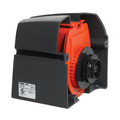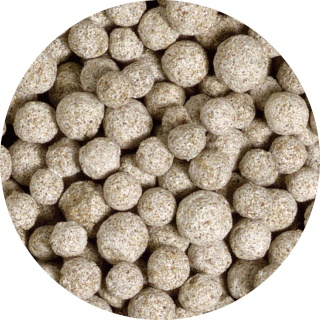In reading some of the
threads on my fish forum lately (Central Virginia Aquarium Community) I have become very
interested in the topic of aquarium filtration. We all do it, in some way shape
or form, but there is a lot of diversity in how we all do it, even from one
tank to the other for the same fishkeeper.
I have kept super low-tech to NO tech tanks, utilizing plants to take care of a few fish and the fish waste taking care of the plants, low-tech setups with air pumps or water pumps driving small sponge filters, simple HOB medium-tech tanks and higher-tech canister filters with UV sterilization. I'd even consider canisters with UV and heat integrated into the return lines, as a way to streamline tank care and keep equipment hidden away.
I tend to keep aquariums as more of an artistic expression, as a living sculpture or painting that is part of my household decor, but at the same time having a keen interest in the fish themselves and how to make them happy at the same time as creating a visually appealing display. This is why, currently anyway, my goal is to filter the water but to hide the equipment necessary to do so.
However, that's not even the point here - no matter what your focus is in keeping your fish, there are still a ton of options, and several schools of thought on "ideal" filtration.
I have kept super low-tech to NO tech tanks, utilizing plants to take care of a few fish and the fish waste taking care of the plants, low-tech setups with air pumps or water pumps driving small sponge filters, simple HOB medium-tech tanks and higher-tech canister filters with UV sterilization. I'd even consider canisters with UV and heat integrated into the return lines, as a way to streamline tank care and keep equipment hidden away.
I tend to keep aquariums as more of an artistic expression, as a living sculpture or painting that is part of my household decor, but at the same time having a keen interest in the fish themselves and how to make them happy at the same time as creating a visually appealing display. This is why, currently anyway, my goal is to filter the water but to hide the equipment necessary to do so.
However, that's not even the point here - no matter what your focus is in keeping your fish, there are still a ton of options, and several schools of thought on "ideal" filtration.
I'm of TWO MINDS on the topic. I think
simple setups with sponge filters alone are marvelous, time tested and proven,
without question, and I have several classic Aquatop sponge filters stored away
for use anytime I need to set up something quick (I used to keep one running at
all times in the back corner of a tank solely to keep it seeded with bacteria
in case I had an issue and needed to pop a fish into a hospital/spawning/fry
growout tank). The other part of me LOVES technology and the new developments
in filtration that abound today catch my eye and intrigue me - I
not-so-secretly want to try out the newest aquarium toy or gadget on the
market.
How can it be that for so many people for so many years a simple sponge filter is the way to go, yet others swear by powerful water movers with compartments dedicated to chemical, mechanical and bio filtration? Why do some tanks need all that and others don't? Is all this tech completely unnecessary and just a way to appeal to the personality type that loves technology and is willing to spend $$$ to have it? I have no doubt that there are tanks out there requiring specialized filtration to mimic native conditions for fish or corals, for instance, but does the average FW tank need any tech at all?
How can it be that for so many people for so many years a simple sponge filter is the way to go, yet others swear by powerful water movers with compartments dedicated to chemical, mechanical and bio filtration? Why do some tanks need all that and others don't? Is all this tech completely unnecessary and just a way to appeal to the personality type that loves technology and is willing to spend $$$ to have it? I have no doubt that there are tanks out there requiring specialized filtration to mimic native conditions for fish or corals, for instance, but does the average FW tank need any tech at all?
I have perfectly happy tanks set up at both ends of the spectrum, and am not sure one way is better than the other, but it is certainly food for thought.
 Subject: FX5 overhaul
Subject: FX5 overhaul 

















